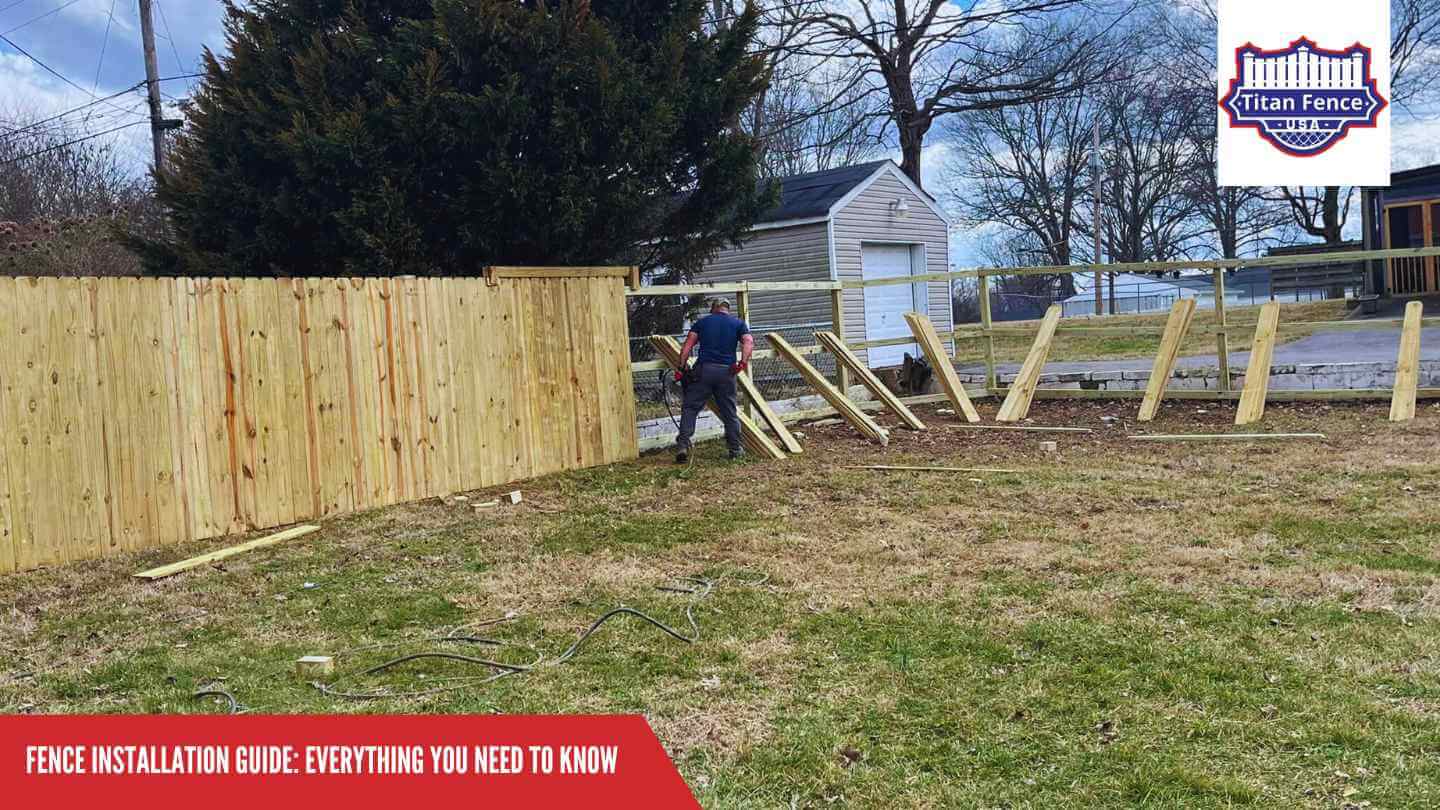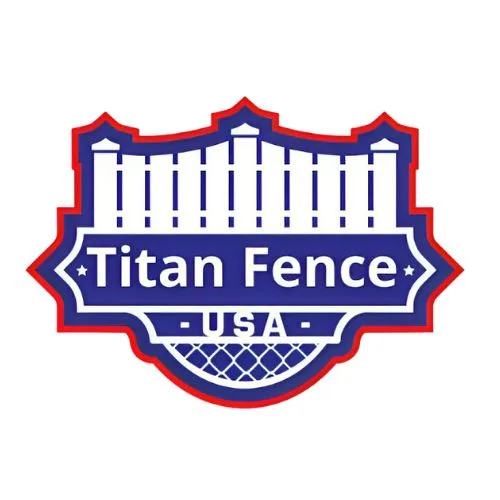Calculating the Costs
Understanding the Linear Foot Cost
The linear foot cost and permit fees are fundamental aspects of your fence installation budget. It refers to the cost per foot of the fence you plan to install. Typically, fence materials costs are priced per linear foot, which means that the total cost of your project will largely depend on the length of the fence you need.
Calculating the linear foot cost is relatively straightforward. You’ll need to consider the type of material and costs you want for your fence, as different materials come at varying price points. For example, vinyl fences tend to have higher costs per linear foot compared to wooden fences, but they often come with longer warranties and require less maintenance over the years.
Another factor influencing the linear foot cost is the fence design and style you choose. Elaborate and decorative fences may cost more per linear foot due to the complexity of their construction, whereas simpler designs may be more budget-friendly for homeowners.
Additionally, local factors such as location, labor costs, time, fence project, and fence posts can impact the linear foot cost. Prices can vary significantly for fence installation costs from one region to another, so it’s essential to obtain multiple quotes from local fencing companies to get an accurate estimate for your intended fence project.
Factors Affecting Installation Costs
- Labor Costs: The average amount of time homeowners spend to install your fence plays a significant role in your overall expenses per foot. Highly skilled installation crews may charge homeowners more for their services, but their expertise can lead to a quicker and more efficient installation process, saving time and costs.
- Materials: The type of materials, costs, homeowners, foot you choose for your fence can have a substantial impact on the total cost. Some materials, like metal fences, are more expensive upfront but may require less maintenance and have a longer lifespan.
- Permits and Fees: Check with your local municipality to determine if homeowners need a building permit for their fence project. The permit fees can vary depending on the costs, homeowners, location, and the intended fence design.
- Property Survey: Before installation begins, homeowners must survey their property lines to ensure that the fence is placed correctly within their boundaries. This survey may come with its own set of homeowners’ fence installation costs.
- If homeowners plan to add features such as gates, post caps, or decorative elements to their fence, these will add to the overall cost of their project.
Choosing the Right Materials
Selecting the appropriate materials for your fence installation, including foot, is a critical decision that will impact the overall quality, durability, and appearance of your fence. In this section, we will explore the various types of fence materials available and help you make an informed choice that aligns with your preferences and budget.
Types of Fence Materials
- Wooden Fences: Wooden fences are a timeless and traditional choice that offers a classic look and natural beauty. They come in various styles, including picket, privacy, and split-rail. However, wooden fences may require regular maintenance, such as staining or painting, to protect against the elements.
- Vinyl Fences: Vinyl fences have gained popularity in recent years due to their low maintenance requirements and long lifespan. They are available in a variety of styles and colors, allowing you to customize the appearance of your fence. Vinyl fences are resistant to rot, insects, and weathering, making them a durable choice.
- Metal Fences: Metal fences, including aluminum and wrought iron, provide excellent security and a sleek, modern appearance. They are known for their strength and durability. While aluminum is lightweight and resistant to rust, wrought iron offers a more ornate and decorative option.
- Composite Fences: Composite fences combine wood fibers and recycled plastic to create a material that mimics the look of wood while offering the durability and low maintenance of plastic. They are resistant to rot, insects, and fading, making them a versatile choice.
- Electric Fences: Electric fences are often used in rural areas to contain livestock or deter wildlife. They consist of wires charged with electricity and are designed to deliver a mild shock to any creature that comes into contact with them. Electric fences require professional installation and maintenance.
- Metal Posts vs. Wooden Posts: In addition to the primary fence material, you’ll also need to decide whether to use metal posts or wooden posts. Metal posts are known for their durability and resistance to rot, while wooden posts may require more maintenance but can blend seamlessly with wooden fences.
Quality vs. Price Point
When choosing your fence material, it’s essential to strike a balance between quality and price point. While some materials may come with a higher initial cost, they could save you money in the long run by requiring less maintenance and having a longer lifespan.
Consider your budget and long-term goals when selecting a material. Sometimes, it’s worth investing a bit more upfront to ensure that your fence remains sturdy and attractive for years to come. However, if you’re working within a tight budget, there are still quality options available that can provide excellent value for your money.
Preparing for Fence Installation
Obtaining the Necessary Permits
In many areas, fence projects require building permits to ensure that they comply with local regulations and safety standards. The specific requirements for permits can vary depending on your location, the type of fence, and its height.
To avoid potential issues down the line, it’s essential to research your local building codes and permit requirements before starting your project. Failure to obtain the necessary permits can result in costly fines or having to remove the fence altogether.
When applying for a building permit, you may need to provide details about your intended fence design, including its height, materials, and location on your property. Be prepared to pay permit fees, which can also vary widely depending on your area.
Surveying Your Property Lines
- Property Surveyors: Hiring a professional land surveyor is the most accurate way to establish your property boundaries. Surveyors use specialized equipment to precisely measure and mark the property lines.
- Existing Property Survey: If your property was surveyed when you purchased it, you may have access to an existing survey that you can use as a reference. However, it’s a good idea to have the lines rechecked if there is any doubt.
- Consult Neighbors: Communicate with your neighbors about your fence installation plans. Open and respectful dialogue can help avoid conflicts and ensure that everyone is on the same page regarding property boundaries.
- Local Regulations: Be aware of any local regulations or ordinances that may dictate fence placement in relation to property lines. Some areas have specific setback requirements that must be followed.
The Installation Process
|
Step |
Description |
|
1. Digging Post Holes and Setting Posts |
– Measure and mark the post hole locations along the fence line. |
|
– Use a post-hole digger to excavate holes at regular intervals, typically 6 to 8 feet apart. |
|
|
– Ensure that the holes are deep enough to accommodate at least one-third of the post’s length. |
|
|
– Add gravel at the bottom of each hole for drainage. |
|
|
– Place the fence posts in the holes, ensuring they are level and properly aligned. |
|
|
– Secure the posts with concrete or tamped soil for stability. |
|
|
– Allow the posts to set before proceeding to the next step. |
|
|
2. Attaching Fence Panels and Rails |
– After the posts have set, attach the fence panels or rails to the posts. |
|
– Use brackets or screws to secure the panels in place. |
|
|
– Ensure that the panels are level and evenly spaced. |
|
|
– If you are installing a wooden fence, you may need to attach individual pickets to the rails. |
|
|
– Follow the manufacturer’s instructions for your specific fence type. |
|
|
3. Adding Post Caps and Gate |
– Install post caps on the top of each fence post for added protection and aesthetics. |
|
– If your fence design includes a gate, follow the manufacturer’s instructions to install it. |
|
|
4. Enhancing Curb Appeal |
– Consider adding decorative elements such as finials, lattice, or trim to enhance the look of your fence. |
|
– Apply a finish or stain to wooden fences for added protection and to maintain their appearance. |
|
|
– Ensure that your fence is free from debris and looks neat and appealing. |
Adding Finishing Touches
Installing Post Caps and Gate
One of the simplest yet effective ways to enhance the aesthetics and longevity of your fence is by installing post caps. These decorative caps fit on top of each fence post and serve multiple purposes. They not only add a stylish finishing touch but also protect the end grain of the wood from moisture, preventing rot. Post caps come in various styles and materials, allowing you to choose a design that complements your fence’s overall look.
If your fence design includes a gate, proper installation is crucial. Follow the manufacturer’s instructions carefully to ensure that the gate functions correctly and securely. A well-installed gate provides both convenience and security, allowing you easy access to your property while keeping unwanted visitors out.
Enhancing Curb Appeal
To maximize the curb appeal of your fence, consider additional decorative elements. Depending on your style preferences, you can add ornamental features such as finials, lattice, or trim. These embellishments not only make your fence stand out but also add a touch of personality to your property’s exterior.
For wooden fences, applying a finish or stain is an essential step to protect the wood from the elements and maintain its appearance. Regular maintenance can extend the life of your fence and preserve its original beauty.
Ensure that your fence is free from debris and looks neat and appealing. Regularly clean and inspect your fence to identify any maintenance needs, such as loose screws or damaged panels. A well-maintained fence not only contributes to the aesthetics of your property but also enhances its overall value.
By paying attention to these finishing touches, you can transform your fence into a visually appealing and functional asset that complements your property’s landscape and style.

Conclusion
In conclusion, your fence installation journey involves careful planning, selection of the right materials, and attention to detail throughout the installation process. By understanding the cost factors, choosing appropriate fence materials, obtaining necessary permits, and ensuring accurate property line surveying, you lay the foundation for a successful project.
As you progress to the installation process, remember the importance of properly digging post holes, setting posts, and attaching fence panels to achieve a sturdy and long-lasting fence. Don’t overlook the significance of adding finishing touches like post caps, gates, and other decorative elements to enhance the overall aesthetics and functionality of your fence.
At Titan Fence Company, we are committed to providing top-quality fence materials and installation services to homeowners seeking to enhance their properties. Our experienced teams understand the value of a well-constructed fence, and we are dedicated to delivering exceptional customer service and satisfaction.
When you choose Titan Fence Company, you’re not just investing in a fence; you’re investing in the security, privacy, and curb appeal of your home. With our expertise and commitment to quality, your fence installation project is in capable hands.
Contact us today for a free quote and take the next step towards transforming your property with a beautiful and functional fence. Thank you for choosing Titan Fence Company as your trusted partner in fence installation.

